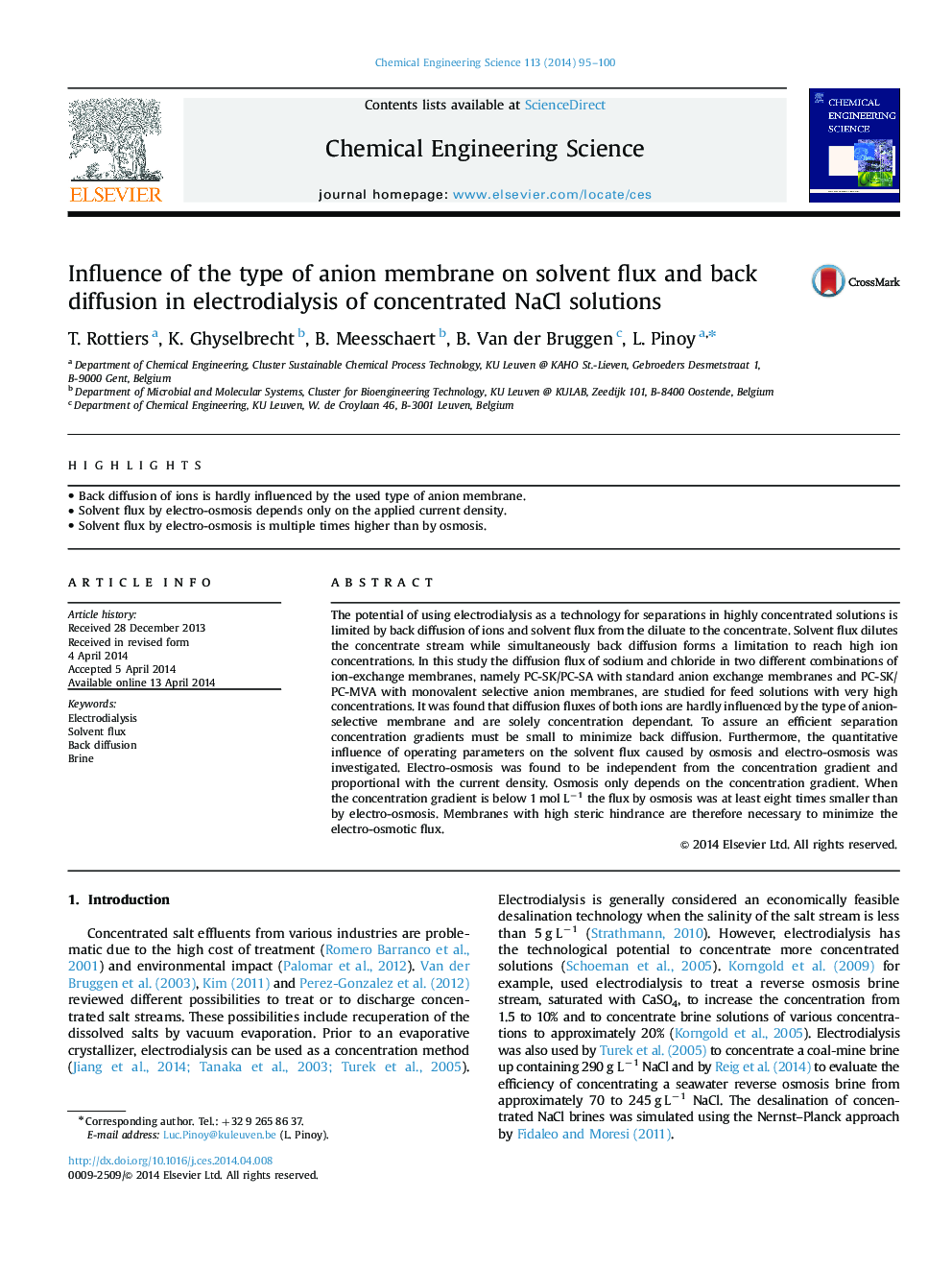| Article ID | Journal | Published Year | Pages | File Type |
|---|---|---|---|---|
| 6591286 | Chemical Engineering Science | 2014 | 6 Pages |
Abstract
The potential of using electrodialysis as a technology for separations in highly concentrated solutions is limited by back diffusion of ions and solvent flux from the diluate to the concentrate. Solvent flux dilutes the concentrate stream while simultaneously back diffusion forms a limitation to reach high ion concentrations. In this study the diffusion flux of sodium and chloride in two different combinations of ion-exchange membranes, namely PC-SK/PC-SA with standard anion exchange membranes and PC-SK/PC-MVA with monovalent selective anion membranes, are studied for feed solutions with very high concentrations. It was found that diffusion fluxes of both ions are hardly influenced by the type of anion-selective membrane and are solely concentration dependant. To assure an efficient separation concentration gradients must be small to minimize back diffusion. Furthermore, the quantitative influence of operating parameters on the solvent flux caused by osmosis and electro-osmosis was investigated. Electro-osmosis was found to be independent from the concentration gradient and proportional with the current density. Osmosis only depends on the concentration gradient. When the concentration gradient is below 1 mol Lâ1 the flux by osmosis was at least eight times smaller than by electro-osmosis. Membranes with high steric hindrance are therefore necessary to minimize the electro-osmotic flux.
Keywords
Related Topics
Physical Sciences and Engineering
Chemical Engineering
Chemical Engineering (General)
Authors
T. Rottiers, K. Ghyselbrecht, B. Meesschaert, B. Van der Bruggen, L. Pinoy,
